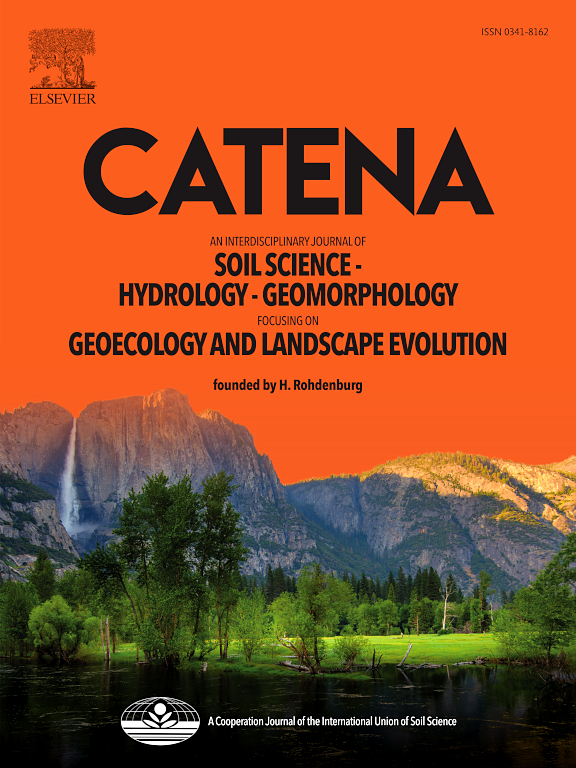The response of soil microbial necromass carbon to global change: A global meta-analysis
IF 5.4
1区 农林科学
Q1 GEOSCIENCES, MULTIDISCIPLINARY
引用次数: 0
Abstract
Soil organic carbon (SOC) is the largest carbon pool of terrestrial ecosystems and it is vulnerable to global change. As an important component of SOC, soil microbial necromass carbon (MNC) largely determines the dynamics of SOC. However, the response of MNC to global change on a global scale is not well understood. Here, we conducted a meta-analysis to assess the global response of MNC to warming, altered precipitation, nutrient addition, and elevated CO2. Our results indicated that MNC was resistant to most global change factors. However, decreased precipitation reduced MNC by 6.79 % and fungal necromass carbon (FNC) by 8.99 %. In contrast, N addition had a favorable effect on MNC (+8.60 %), FNC (+7.61 %), and bacterial necromass carbon (BNC, +12.12 %). Additionally, initial environmental and experimental conditions affected the response of MNC to N addition. Notably, we found that MNC was more responsive in topsoil than in subsoil, which could account for the depth-dependent response of SOC. Furthermore, we found that the response of soil total nitrogen content and that of microbial biomass carbon mediated the MNC response to N addition. Overall, this study enhances our understanding of how MNC responds to global change on a global scale. In future studies, the response of MNC to global change in tropical/boreal regions, in long-term experiments, and in subsoils needs more attention.

求助全文
约1分钟内获得全文
求助全文
来源期刊

Catena
环境科学-地球科学综合
CiteScore
10.50
自引率
9.70%
发文量
816
审稿时长
54 days
期刊介绍:
Catena publishes papers describing original field and laboratory investigations and reviews on geoecology and landscape evolution with emphasis on interdisciplinary aspects of soil science, hydrology and geomorphology. It aims to disseminate new knowledge and foster better understanding of the physical environment, of evolutionary sequences that have resulted in past and current landscapes, and of the natural processes that are likely to determine the fate of our terrestrial environment.
Papers within any one of the above topics are welcome provided they are of sufficiently wide interest and relevance.
 求助内容:
求助内容: 应助结果提醒方式:
应助结果提醒方式:


